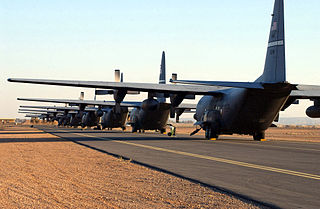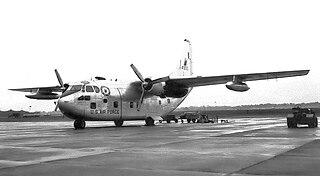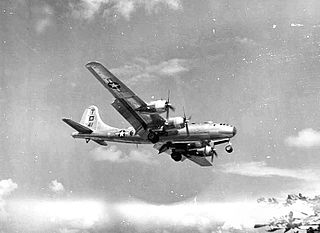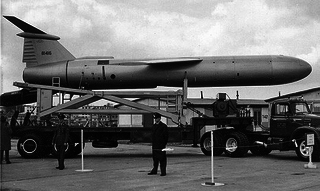
The 487th Air Expeditionary Wing is a provisional United States Air Force unit assigned to the United States Air Forces in Europe. As a provisional unit, it may be activated or inactivated at any time. The unit's last known assignment was in 2003 at Cairo West Air Base, Egypt, during Operation Iraqi Freedom.

The 486th Air Expeditionary Wing is a provisional United States Air Force unit assigned to the Air Combat Command. As a provisional unit, it may be activated or inactivated at any time.

The 485th Air Expeditionary Wing is a provisional United States Air Force unit assigned to Air Combat Command. As a provisional unit, the 485 AEW may be inactivated or activated at any time by Air Combat Command. The wing was last known to be active during Operation Iraqi Freedom in 2003 at Tabuk Regional Airport, Saudi Arabia, in 2003.

The 38th Combat Support Wing is an inactive wing of the United States Air Force. Its last assignment was with Third Air Force at Ramstein Air Base, Germany from 2004 until 2007. The mission of the wing was to enhance support to Third Air Force's geographically separated units.

The 309th Maintenance Wing is an inactive wing of the United States Air Force last based at Hill Air Force Base, Utah. On July 12, 2012 it was inactivated and its function became part of the Ogden Air Logistics Complex.

The 498th Nuclear Systems Wing was a wing of the United States Air Force based at Kirtland Air Force Base, New Mexico.

The 11th Bomb Squadron is a unit of the United States Air Force, 2d Operations Group, 2d Bomb Wing located at Barksdale Air Force Base, Louisiana. The 11th is equipped with the Boeing B-52H Stratofortress.

The 38th Bombardment Group is an inactive unit of the United States Air Force. It was most recently assigned as the operational (flying) component of the 38th Bombardment Wing, stationed at Laon-Couvron Air Base, France, where it was inactivated on 8 December 1957.

The 71st Tactical Missile Squadron is an inactive United States Air Force unit. It was last assigned to the 485th Tactical Missile Wing at Florennes Air Base, Belgium, where it was inactivated on 30 September 1989 with the implementation of the Intermediate-Range Nuclear Forces Treaty.

The 823rd Tactical Missile Squadron is an inactive United States Air Force unit. Its last assignment was with the 38th Tactical Missile Wing at Sembach Air Base, Germany, where it was inactivated on 25 September 1966, as the A model of the MGM-13 Mace was phased out of operation.

The 89th Tactical Missile Squadron is an inactive United States Air Force unit. Its last assignment was with the 38th Tactical Missile Wing, based at Pydna Missile Base at Wüschheim Air Station, West Germany. It was inactivated on 22 August 1990.

The 486th Bombardment Squadron is an inactive United States Air Force unit. Its last was assigned to the 22d Bombardment Wing, stationed at March Air Force Base, California. It was inactivated on 1 July 1971.

The 874th Tactical Missile Squadron is an inactive United States Air Force unit. Its last assignment was with 498th Tactical Missile Group at Kadena Air Base, Okinawa. The squadron was first activated in late 1943 for service during World War II as the 874th Bombardment Squadron. After training in the United States with Boeing B-29 Superfortress bombers, the squadron moved to the Mariana Islands, where it participated in the strategic bombing campaign against Japan, earning two Distinguished Unit Citations before the end of hostilities in August 1945. The squadron returned to the United States in December 1945 and was inactivated in March 1946, and its personnel and equipment transferred to another organization.

The 873rd Tactical Missile Squadron is an inactive United States Air Force unit. Its last assignment was with 498th Tactical Missile Group at Kadena Air Base, Okinawa. The squadron was first activated in 1943 for service during World War II as the 873rd Bombardment Squadron. After training in the United States with Boeing B-29 Superfortress bombers, the squadron moved to the Mariana Islands, where it participated in the strategic bombing campaign against Japan, earning two Distinguished Unit Citations before the end of hostilities in August 1945. The squadron returned to the United States in December 1945 and was inactivated in March 1946, and its personnel and equipment transferred to another organization.

The 6th Air Defense Missile Squadron was an air defense unit of the United States Air Force. It was assigned to the New York Air Defense Sector of Aerospace Defense Command, at Suffolk County Air Force Base, New York, where it was inactivated on 15 December 1964. The squadron had its headquarters at Suffolk County Air Force Base, while the firing batteries of the squadron were at the nearby Suffolk County Air Force Base Missile Annex.

The 30th Tactical Missile Squadron is an inactive United States Air Force unit. In 1985 the squadron was formed by combining three United States Air Force and Army Air Forces units that had served in World War II and the Cold War into a single unit with a common heritage. However, the combined unit has not since been active.

The 1st Tactical Missile Squadron is an inactive United States Air Force unit. It was last assigned to the 585th Tactical Missile Group at Bitburg Air Base, West Germany, where it was inactivated on 18 June 1958.

The 87th Tactical Missile Squadron is an inactive squadron of the United States Air Force last based at RAF Molesworth, England. The squadron was originally activated as the 8th Reconnaissance Squadron. The unit served on antisubmarine patrol early in World War II, then as a training unit until it was disbanded in 1944.

The 302nd Tactical Missile Squadron is an inactive United States Air Force unit. Its last assignment was with the 487th Tactical Missile Wing at Comiso Air Station, Italy, where it was inactivated in 1991 with the implementation of the Intermediate Range Nuclear Forces Treaty.

The 24th Tactical Missile Squadron is an inactive United States Air Force unit. It was last active as the 74th Air Defense Missile Squadron assigned to the 23d Air Division of Aerospace Defense Command, stationed near Duluth Municipal Airport, Minnesota, where it was inactivated in 1972. The squadron's earliest predecessor was active early in World War II as an antisubmarine unit in the Caribbean and Europe until its mission was transferred to the United States Navy. During the Cold War it was a training unit for Matador cruise missiles. Its most recently active predecessor was an air defense missile squadron in the northern United States from 1960 to 1972.




























